Famous Residents # 1: Residing at St Martin-in-the-fields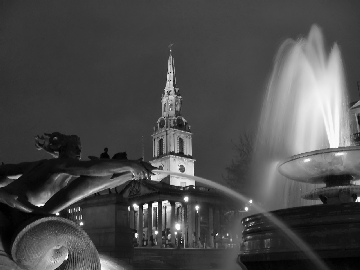
This well-known church was shelter for many homeless people during World War II, and still looking after homeless people today. Named after the Hungarian, St Martin, who was Bishop of Tours in the fourth century. It received its name in-the-fields like its sister church of St Giles when they both stood in the village fields of Charing and St Giles. There was an earlier Norman church on this site dating from before 1222. The building of the present church was started in 1721, now also known as the Actors Church, as the memorials to British actors are normally held here.
It is the final resting place of two very different people. One was the favourite Mistress of King Charles II Nell Gwynne, who was buried here in 1687. The other is the notorious thief Jack Sheppard. His daring escapes from Newgate prison, four times in all, made him a popular villain. After his execution at Tyburn in 1724, he was brought here to be buried by the crowd to prevent surgeons from using his body for dissection.
St Martin-in-the-field Mon- Sat 08.00 - 18.30 Sun - 08.00 - 19.00
Famous Residents # 2: Residing at St Giles-in-the-fields
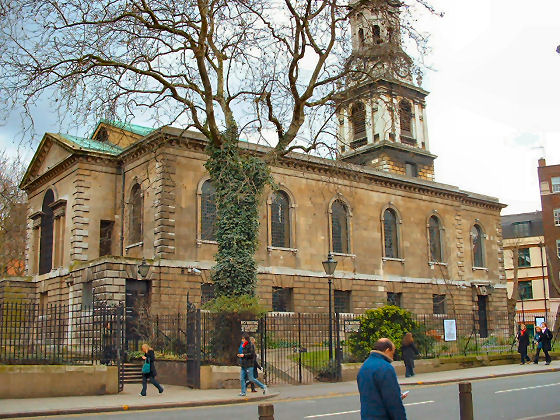
This church was built on the site of a twelfth-century leper hospital dedicated to the patron saint of outcasts. At the time leprosy was London's greatest health risk, more feared than even the plague. In later centuries when passing the church, prisoners travelling from Newgate to Tyburn for execution were given 'cups of charity' at the gate.In 1665 the Great Plague of London began in this parish and in the churchyard stacked and often unnamed, bodies of the plague's victims who lived in the local area. Cecilius Calvert second Lord Baltimore is buried here. Baltimore (1606-1675) was the first proprietor of Maryland - U.S.A. John Milton's daughter, Mary was baptised here in 1647. The actor David Garrick married Eva Maria Violetti here in 1786, and Frances Kemble, the actress also married here in 1786. Lord Byron's daughter, Allegra, and two of Shelley's children were all baptised together at a ceremony in the church in 1818. The architect John Soane was buried here in 1837.
Famous Residents # 3: Residing at St Pancras Old Church
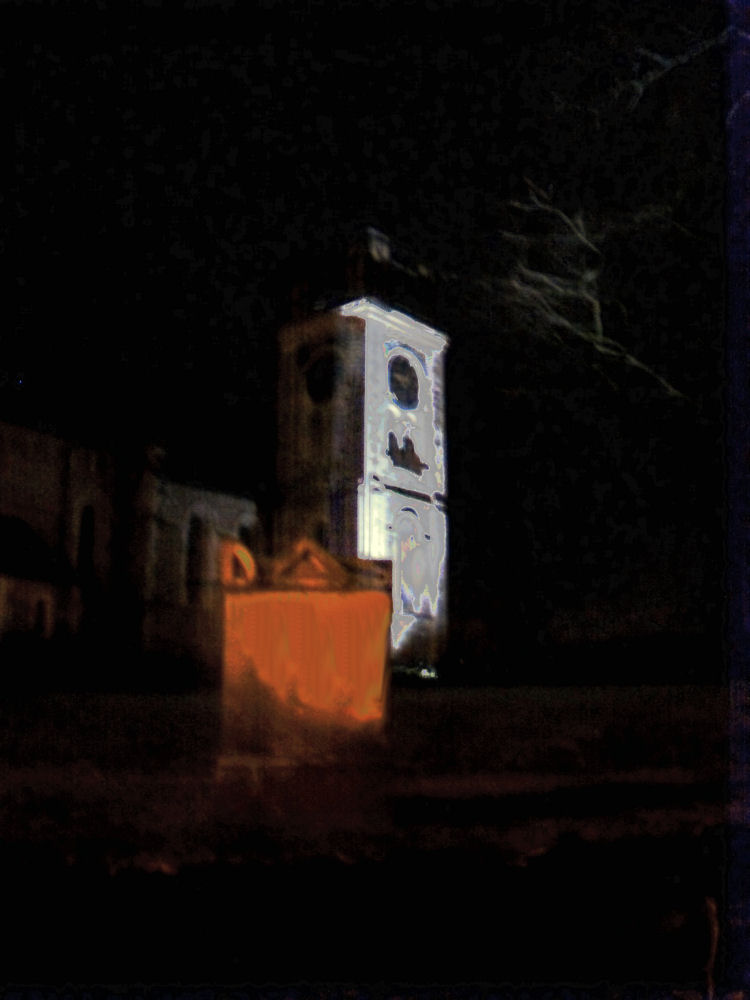
Johnathan Wild, the most important criminal of the eighteenth century London was married here in 1718. After he was executed in 1725 he was buried here. His body did not rest in peace very long as a few days later it was dug up and placed in a gibbet. After his flesh had withered away his skeleton was taken to the Royal College of Surgeons for display.
Also, the thief, Jenny Diver real name Mary Young was buried here after her hanging on the 18th March 1740.
Famous Residents # 4: Residing at St Pauls Cathedral
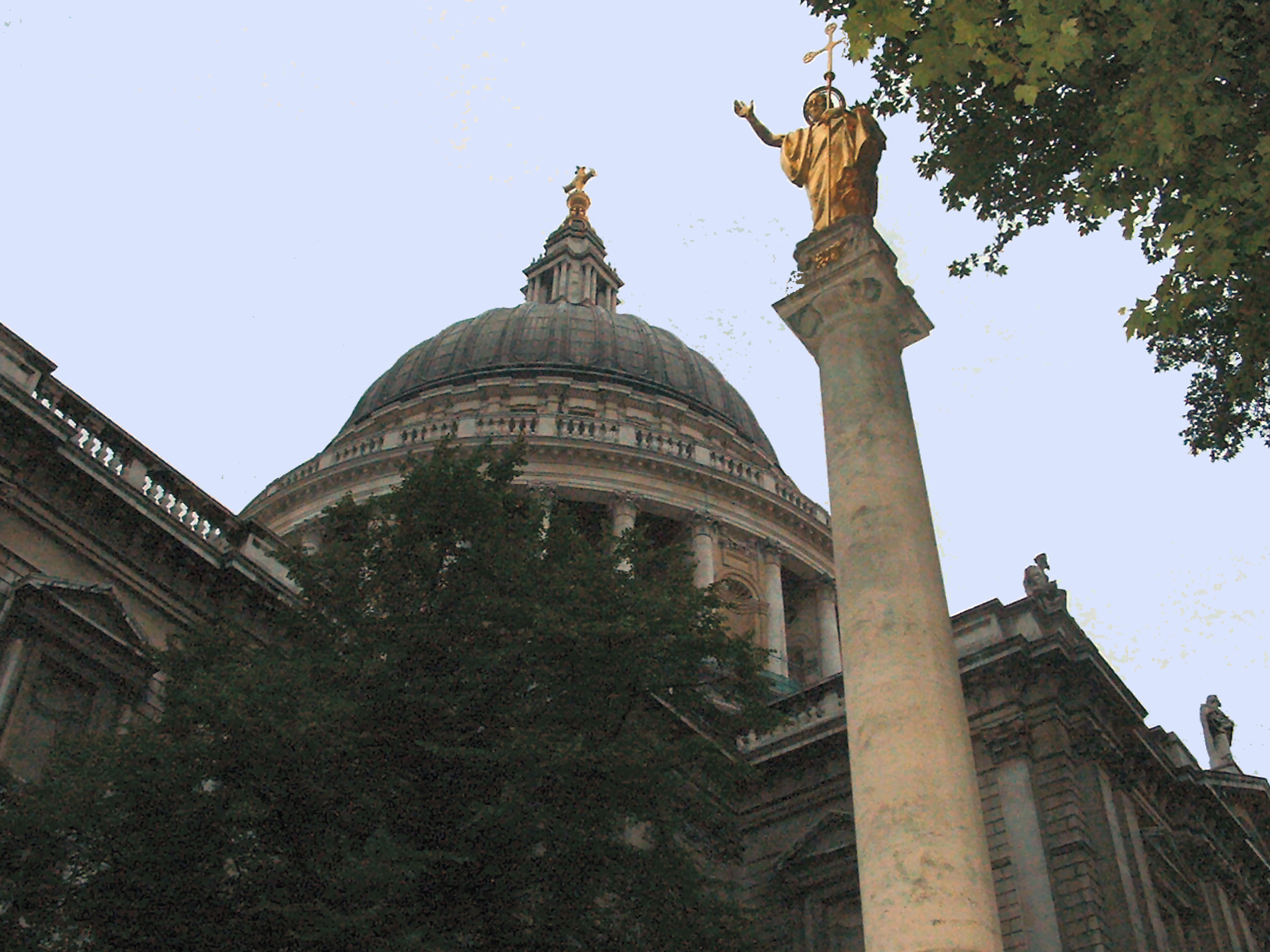
When Sir Christopher Wren died in 1723 he became the first person to be buried in St. Paul's Cathedral.Inside the dome along the cupola runs the Whispering Gallery whose name refers to the remarkable acoustic which make it possible to hear words on one side whispered against the wall on the opposite side, which is about 30 metres. St. Paul's has seen many important occasions: Sir Winston Churchill's funeral service or the wedding of Prince Charles and Princess Diana in 1981. Britain's heroes are buried there- Admiral Nelson, the Duke of Wellington and Sir Christopher Wren.
St Pauls Admission Adult £8 Child £3 - Open Monday - Saturday 08.30 - 16.00
Famous Residents # 5: Residing at St Helens Bishopsgate
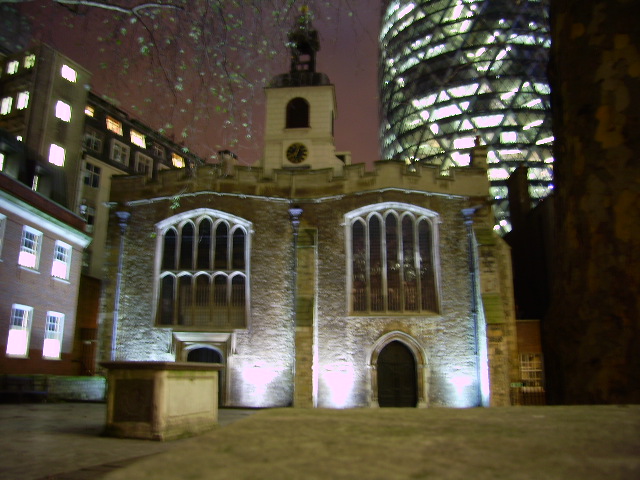
The largest surviving ancient church in London, where Shakespeare used to worship, not only survived the Dissolution, the Great Fire of London and the Blitz. Until the I.R.A terrorist bombs in the 1992 St Mary Axe explosion saw it receive damage from the north, and then in the Bishopsgate bombing, a year later saw damage from the west. Since then the church has been fully restored, it has more monuments than any other city church. It was built on the site of a pagan temple, dating its inception to the 4th-century conversion of Constantine - and is dedicated to his mother Helena. The choir stalls are 15thC and the font, pulpit and doors, 17thC. Generally, open 10- 6 weekdays.
Famous Residents are Sir John Spencer, Sir William Pickering and Sir Thomas Gresham.
St Helen's Bishopsgate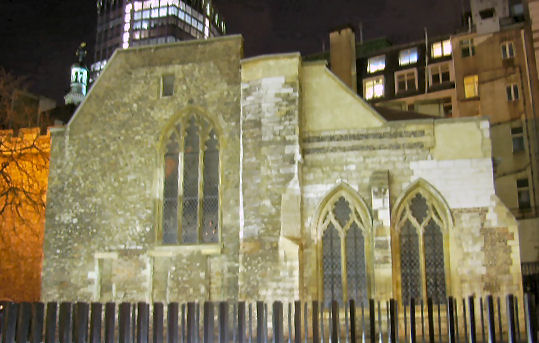
Side view note all the re-building with various bricks.
Famous Residents # 6: Residing at St Stephens WallbrokeST STEPHEN'S WALBROOK famed in the early 1700s for its exquisite architecture (the Italians admired it as the model for a new school of architecture), it's more famous today for being the founding place of The Samaritans charity, by the pastor, Chad Varah. Has the best acoustics of any church in the country, thanks to the positioning of the dome - it was used by Wren as a rehearsal for St Pauls. The occasional choir concerts and rehearsals are worth lingering for - such is acoustic. Most of the church furniture is 17thC, and Sir John Vanbrugh is buried here. Has strong links with the Grocers' company. Mon to Fri 10 am to 4 pm (3 pm on Fri).
Famous Residents # 7: Residing at St Mary Abchurch
ST MARY ABCHURCH One of Wren's prettiest churches that has scarcely altered since it was built. Wren got his most talented friends to do the interiors which still survive, especially the reredos by Grinling Gibbons. It's now a guild church and only open in the mornings. Mon to Thurs 10 am to 2 pm.
Famous Residents # 8: Residing at St Leonards Shoreditch
This site has been occupied by a church since the 1100s. The present building by George Dance dates from 1740: There were the Village Stocks until recently standing in the churchyard. Among those buried here was James Burbage, the famous owner of the first English playhouse known as "The Theatre". Also his son Richard Burbage, who created the parts of Hamlet and Richard II. Another famous resident is Richard Tarleton, the Elizabethan actor and Will Somers, jester to Henry VIII.
Famous Residents # 9: Residing at Christ church Spitalfields
CHRIST'S CHURCH SPITALFIELDS Looks splendid as you approach it from Brushfield Street alongside Spitalfield market. One of Hawksmoor's masterpieces it has an octagonal tower and magnificent columns on the front, the interior is spartan and the crypt used to treat alcoholics.
Famous Residents # 10: Residing at St Mary-le-bow

The present St Mary-le-bow was built by Sir Christopher Wren after the great fire of 1666; it stands on the site of a Norman Church dating from the time of William the Conqueror. 'The great bell of Bow' for in Norman times there was only the one bell, and it had a much stronger vibration than any other city bells. It could be heard over four miles away at Highgate hill, for it was where Dick Whittington is reported to have heard the bells telling him to 'return again Whittington Lord Mayor of London' returning to London he became Lord mayor four times. The present church has twelve bells in the steeple and is considered one of Wren's masterpieces. With constructed balcony and views of Cheapside and the Lord Mayor's Show. The twelve bells still ring out and if you are born within their sound it is said you are a true Cockney. The term Cockney, one who lives in the land of Cocaigne - the land of plenty. Cocaigne was a medieval story where all the houses were made of cakes and its streets paved with gold. London appeared to country-folk as a city overflowing with food and riches.
St Mary Le Bow Opening Times Mon to Thurs 07:30 - 18.00 Fri 07.30 - 16.00 Admission Free
Also has a nice place to eat in the crypt -
Café Below
Famous Residents # 11: Residing at St Mary Woolnoth
ST MARY WOOLNOTH Strangely fronted on the corner of King William Street and Lombard street. The Woolnoth refers to its founder Wulfnoth a Saxon prince, built on the site of the Roman temple of Concordia.
Has existed in its present form since 1273, with Great Fire damage repaired by Wren, re-built later by Hawksmoor. The interior is inspired by the craze for things Egyptian which was prevalent at the time. Bank tube station is excavated directly beneath. Edward Lloyd, who founded Lloyd's coffee house which later became Lloyds of London, is buried here. It is now a guild church. Mon to Fri 7:45 am to 5 pm.
Famous Residents # 12: Residing at St Katherine Kree
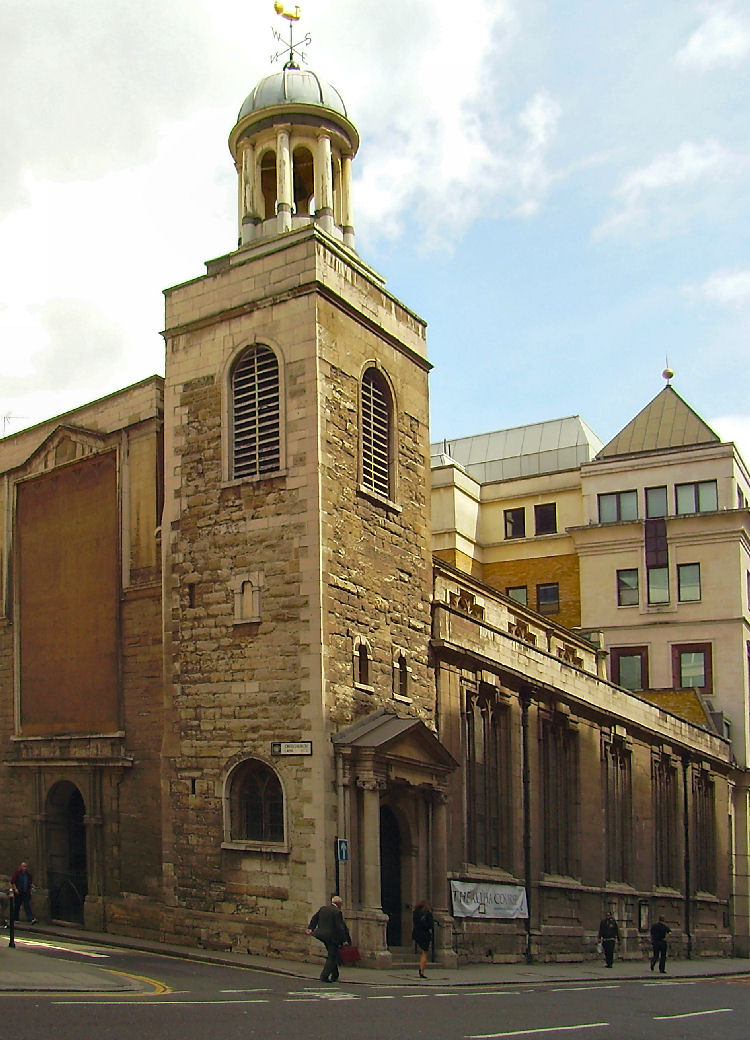
ST KATHERINE KREE Survived the Great Fire. Although built in 1630, a Renaissance-Style building. The outside walls appear Tudor, but with a classic porch and trimmings. The interior is similarly hybrid with classical columns supporting Renaissance arches with Tudor clerestory. The ceiling bears the arms of 17 Livery companies. The organ was played by Handel, Wesley and Purcell.
Opening Times: Mon to Fri 10:30 am to 4 pm
Famous Residents # 13: Residing at St Andrews Undershaft
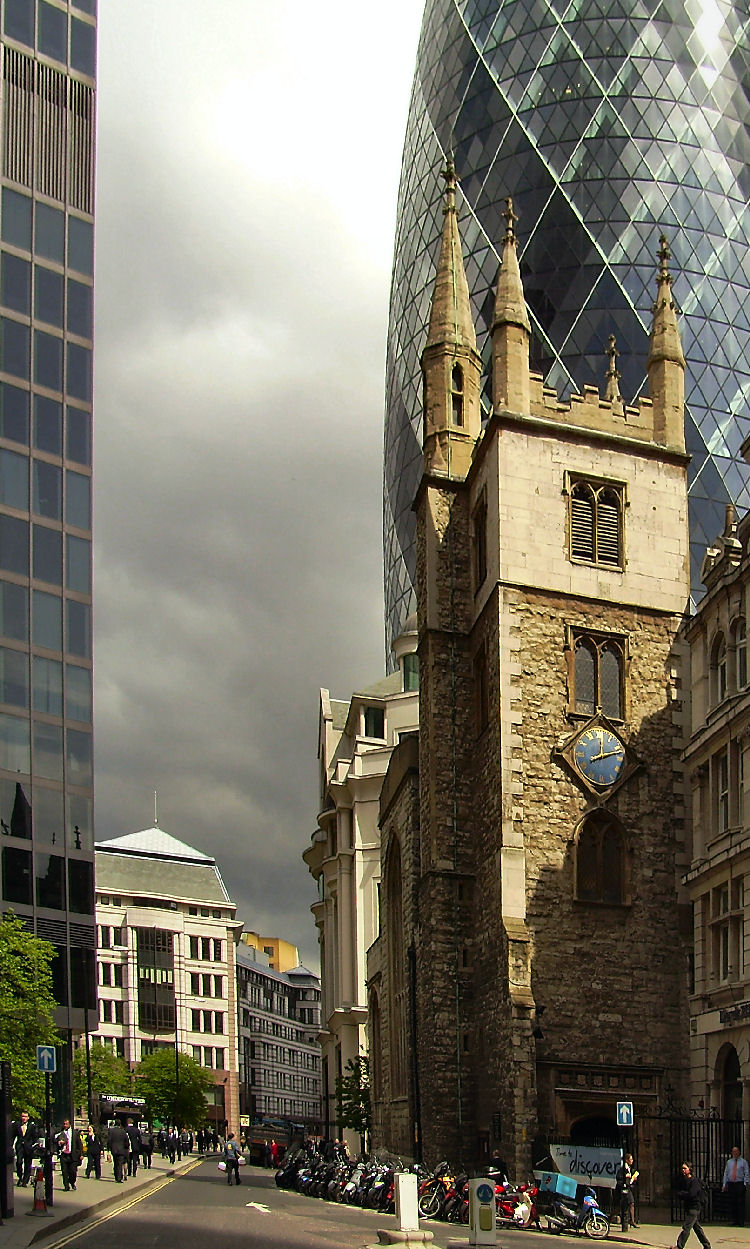
ST ANDREWS UNDERSHAFT derives its name from the unusually tall maypole which was erected next to the church - the maypole was denounced as heathen and burnt in 1549. Not damaged in the Great fire has traces of various buildings and rebuilding in 1520, 1627, 1684, 1830 and 1875. The organ dates from 1696. Famous Residents includes John Stow, whose monument was erected by his widow, and is a figure of him with a quill pen in his hand, the custom of renewing the pen each year still remains.
Hans Holbein is also buried here.
Famous Residents # 14: Residing at Holy Sepulchure
Another church founded by Henry I's jester, Rahere after he gave up the cap and bells for the Prior's cowl in the early 12th century. It was here that the Knights of the Crusade set out for their disastrous and bloody campaigns in the east. It provided (little) succour to prisoners in Newgate Jail, destined for execution. Burnt by the great fire of 1666 its walls withstood the terrific heat. The fine fifteenth-century tower was an inferno of flames and the bells melted, but with its four pinnacles, it still stands.
Famous residents include the tomb of Roger Ascham, tutor of Queen Elizabeth I. Another famous man buried here is Captain John Smith (d.1631) the explorer and colonist of the eastern coast of America, he was rescued from the Indians by the chief's daughter, Pocahontas.
The church has strong associations with musicians and a strong reputation for the quality of its music - Henry Wood, founder of the Promenade concerts was christened and buried here. It is the headquarters of the Royal School of Church music.
Opening Times: Wed: Noon to 3 pm.
Famous Residents #15: Residing at St Benet's Pauls wharf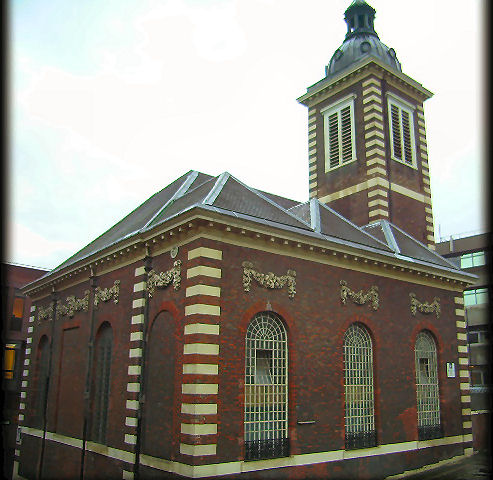
Charming Wren church, sadly virtually always closed and when open has services in Welsh. Uncharacteristic for Wren the inside is almost a square and the walls coincide at the same angles. Inigo Jones was buried here and his monument is inside.
Famous Residents # 16: Residing at St Botolph's Aldgate
Originally a guild church, then a priory, then crown property, this historic church has been much altered since it was founded in about 1000 AD. The present building, by Dance, dates from 1744 but was altered by Bentley, who did much work on Westminster Abbey. The organ of 1676 still exists and the bells date back to 1744. There are several monuments inside, especially one to two knights, reunited with their maker on Tower Hill's execution block for being Catholics.
The author Daniel Defoe (buried in Bunhill fields ) was married here and gives a vivid description of the plague pits in the yard in his account of the great plague that preceded the great fire of 1666.
Opening Times Mon to Fri 11 am to 3 pm
Famous Residents # 17: Residing at St Botolph's Aldersgate
One of the four St Botolph's built near the old gates of the city for the relief of travellers, named after the 7th century Saxon Abbot Boltoph who was a precursor to St Christopher (an entirely fictitious saint, now exposed and decanonised).
Only slightly damaged in the Great fire, but was rebuilt in 1788 anyway. Much nicer inside than its outside would give hint to.
Famous Residents # 18: Residing at St Clements Eastcheap
From whence 'Oranges and Lemons, say the bells of St Clements'. One of Wren's -plainest churches, though the parishioners were well pleased with it at the time.
Famous Residents # 19: Residing at St Dunstan in the East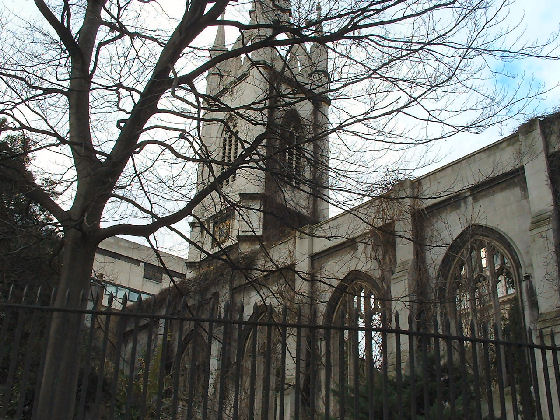
St Dunstan in the East Idol Lane, ruins of this old church are remarkable for the very beautiful secluded gardens which have grown up around them - a real oasis of calm in the city.
Famous Residents # 20: Residing at St Dunstans in the west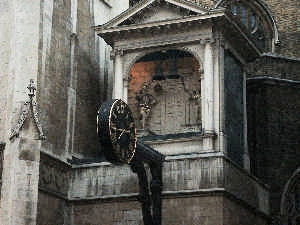
Dates from 1185. Has a bust to William Tyndale who preached here. John Donne was also rector here. And Izaac Walton (of fishing fame) worshipped here. Samuel Pepys used the church as a place to pick up pretty serving-girls - but had little luck as his diary laments. The clock has two figures, of Gog and Magog who mark the time. Just inside the doorway are old statues of King Lud and his two sons. Also used by the Romanian Orthodox Church, and has a fine 19thC icon screen from Budapest.
Opening Times Tues 11 am - 3 pm.
More Famous Residents
London Time

Follow Us
The contents of this website are the property of knowledgeoflondon.com and therefore must not be reproduced without permission. Every effort is made to ensure the details contained on this website are correct, however, we cannot accept responsibility for errors and omissions.
© Copyright 2004 -
Contact Us | Advertise